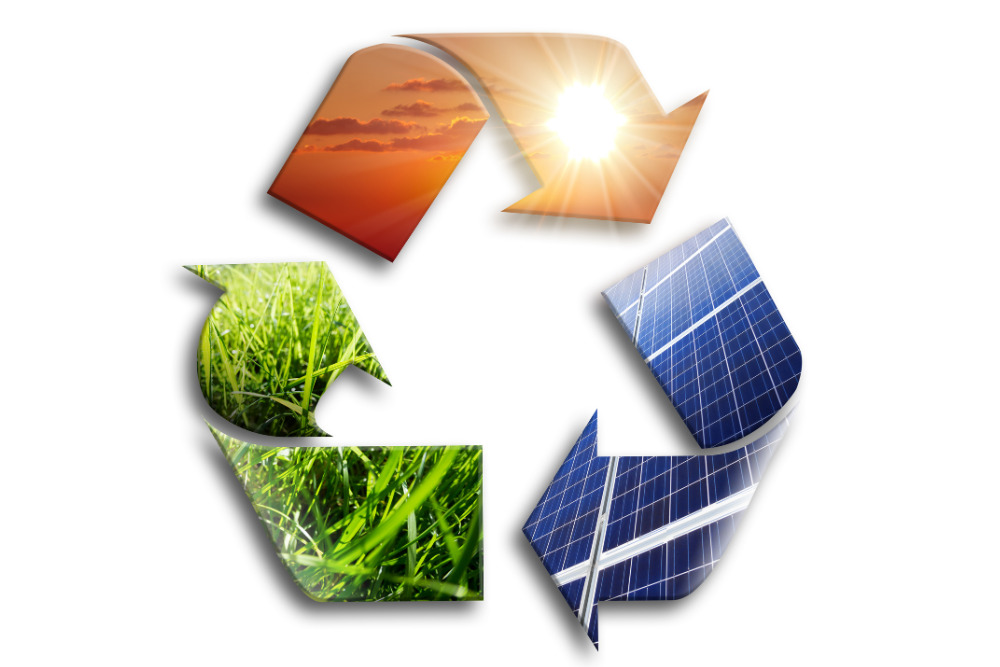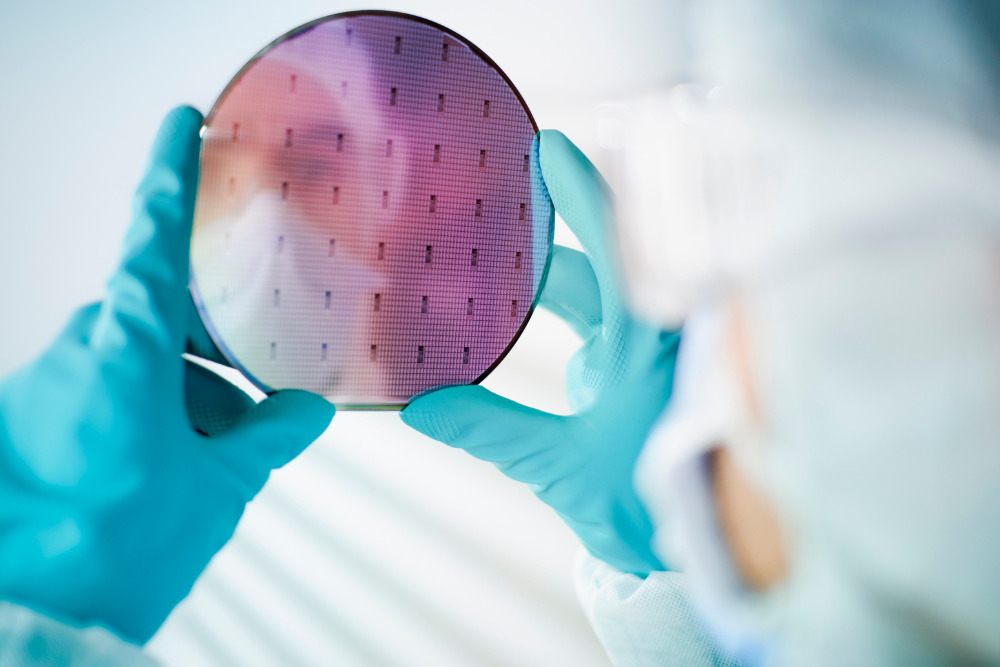
Solar panel recycling is an ongoing debate in the solar energy industry as stakeholders find the best ways to put old panels to good use.
Why Is It Important To Recycle Solar Panels?
As solar power takes center stage in reducing reliance on fossil fuels and boosting the adoption of clean energy, it's critical to think about the end of life of solar panels. Many of the first solar panels installed in the 1980s are just beginning to reach the end of their life cycle. As panels begin to clutter landfills, professionals are racing to create affordable and eco-friendly recycling processes.
A 2019 study indicates that solar panel waste in the United States is expected to reach 9.8 million metric tons between 2030 and 2060. While this paints a grim picture concerning environmental impacts, it's also an excellent opportunity for job creation and recovery of valuable materials through proper decommissioning and recycling processes.
Solar panels are made of various components, including glass, metals, and chemical elements such as silicon, that can be reused to reduce waste and costs associated with mining new raw materials.
Some solar panels, such as thin-film panels, are made with toxic chemical elements like copper indium gallium diselenide and cadmium telluride. This makes recycling these panels even more important for human safety and the environment.
Why is recycling solar panels important?
- Reduce dumping: Before the introduction of solar PV recycling practices, most solar panels would end up in landfills. Recycling is an excellent way to reduce waste accumulation and create landfill space.
- Reduce environmental impacts: Some solar panels contain heavy metals like lead and cadmium, which are hazardous to the environment and human health. Recycling companies ensure proper disposal of such materials to prevent them from leeching into the soil and water.
- Recover and reuse materials: A report by the International Renewable Energy Agency (IRENA) shows that the cumulative value of recoverable materials from old panels will be $450 million globally by 2030. This equates to the cost of producing 60 million panels currently. Recycling programs are a great way to save and promote sustainability by reducing the extraction of new raw materials.
- Job creation: The job market for solar panel recycling will grow exponentially in the coming years as more panels reach the end of their lifespan and technological advancements make recycling a more affordable and viable option for installers.

How Are Solar Panels Recycled?
The primary process of solar panel recycling involves breaking them down into individual components. Some materials can be reused in manufacturing new panels, while others are used in other applications. Certain toxic materials can't be reused and must be properly disposed of.
The solar components that can be reused include:
- Glass sheets, which make up about 70% of solar panels
- Metal/aluminum frames
- Copper wires
- Silicon solar cells
Although the recycling process varies depending on the type of PV module, the typical process includes:
- Collection and transportation: The first step in the recycling process is to collect end-of-life solar panels from various sources. These sources can include solar farms, residential installations, or manufacturing facilities. Once collected, the panels are transported to recycling plants.
- Initial inspection: Upon arrival at the recycling facility, the solar panels undergo an initial inspection. This inspection helps identify the type of panels, their condition, and any potential hazards, such as damaged glass or electrical components.
- Panel dismantling: In this step, the outer components of the solar panels are removed. This includes the aluminum frame, cables, junction boxes, and any other non-glass materials. These components are typically separated and sent for recycling or reuse in other industries.
- Glass separation: Solar panels consist of a glass sheet on the front side. The glass is separated from the other components, such as the silicon wafers. The separation process can be mechanical, chemical, or thermal, depending on the recycling facility and technology used.
- Silicon wafer recovery: The crystalline silicon wafers, which are the heart of solar panels, are separated from the remaining materials. These silicon wafers are then cleaned and prepared for reuse in the manufacturing of new solar panels or other applications.
- Metal recovery: Any metal components, such as aluminum frames and copper wires, are further processed for recycling. These metals can be melted down and reused in various industries.
- Other material separation: Some components, such as plastics and semiconductors, may also be separated and processed for recycling or disposal according to the EPA's regulations for electronic waste.
- Hazardous material handling: Solar panels may contain hazardous materials like cadmium and lead. These materials are handled carefully and disposed of in compliance with environmental regulations to prevent harm to the environment and humans.
- Quality control and testing: Reclaimed materials, especially silicon wafers, may undergo quality control and testing to ensure they meet industry standards for reuse in new solar panels.
- Waste management: Any materials that cannot be recycled or reused are managed as waste. Proper disposal methods are used to minimize environmental impact, and hazardous waste is disposed of safely.
- Documentation and reporting: Recycling facilities maintain records of the recycling process, including the types and quantities of materials processed and disposed of. This documentation ensures compliance with environmental regulations and industry standards.
- Market reintegration: Recycled materials, such as silicon wafers and metals, are reintegrated into the market for use in manufacturing new solar panels or other products.

Can Solar Panels Be Reused?
Generally, a solar panel's lifespan is between 25 and 30 years, after which its efficiency diminishes. Instead of breaking down and reusing the individual components, solar panel modules can be reused in certain applications.
solar panels can be reused to some extent. The extent to which they can be reused depends on their condition and the specific components involved. Here are some ways in which solar panels can be reused:
- Reinstallation: If a solar panel system is still in good working condition but needs to be removed or relocated for some reason (e.g., roof repairs or moving to a new location), the panels can be reused by reinstalling them in a different location or on a different structure.
- Upgrading: Solar panel technology continues to advance, and older panels may be replaced with newer, more efficient ones. However, the older panels can still be functional and may find a second life in a different application or location, such as powering smaller devices or off-grid systems.
- Repurposing: Solar panels can be repurposed for various applications. For example, they can be used to power water pumps, lighting systems, or small appliances in remote areas without access to the grid. Some creative uses include incorporating them into art installations or outdoor shading or charging structures.
- Resale: There is a market for refurbished solar panels. If the panels are still in good condition and have many years of life left, they can be sold to individuals or organizations looking for cost-effective solar solutions.
Can Solar Panels Be 100% Recycled? What Percentage Ends Up In Landfills?
Technically, it's possible to recycle 100% of the solar panel components. However, this remains a pipe dream due to the lack of specific methods and processes to separate and purify different materials that make up a solar panel.
Many in the industry consider the situation dire since more than 90% of PV panels in the United States end up in landfills. Why aren't more solar panels recycled?
- Solar recycling is a complicated process: Currently, purifying essential materials from solar panels such as silicon, silver, and copper is expensive; thus, most handlers prefer to dump the panels instead.
- There is a lack of federal regulations on recycling-based recovery of used panels. Although some states like Washington and California have policies on handling solar panels, they do not directly point to recycling.
- Limited recycling technology: The current recycling technology is limited and needs more infrastructure and services.
- It's expensive: Solar installers have a hard time justifying the cost of sending old panels to a recycling facility. It costs about $30 per panel to recycle versus $1 to send them to a landfill.
How Much Does It Cost To Dispose Of Solar Panels?
A report by the National Renewable Energy Laboratory (NREL) states that recycling one solar module costs between $15 and $45. Although data on solar panel recycling cost is scarce, this amount is higher than the cost of disposal, which is less than $1 for every panel and $5 to dispose of in hazardous waste landfills.
Therefore, cost remains a huge barrier to solar panel recycling.
What Is The Recycling Rate For Solar Panels?
The recycling rate of solar PV panels stands at 10%. This means most end-of-life solar panels end up in landfills, contributing to the loss of valuable materials while negatively impacting the environment.


